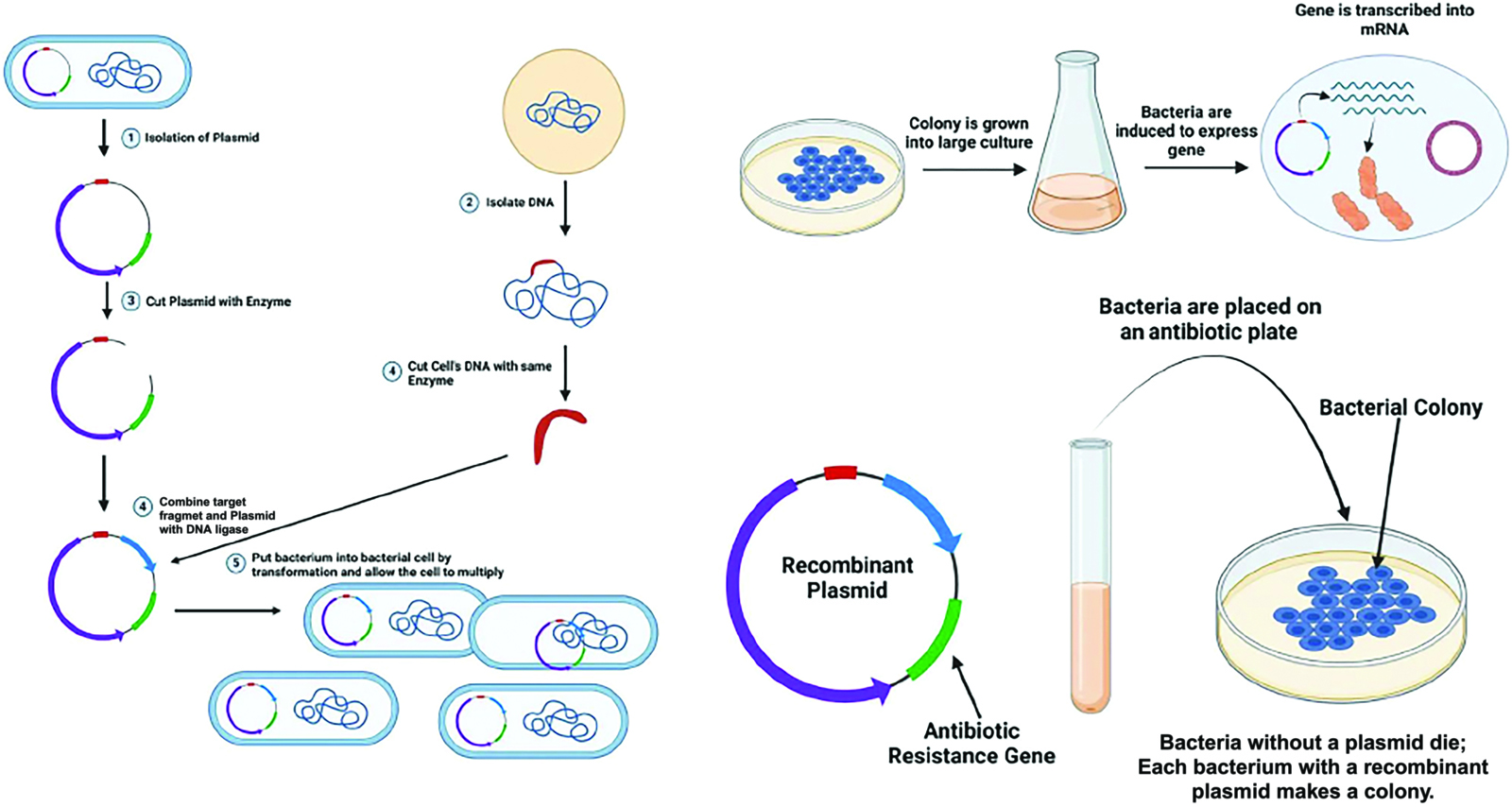Molecular cloning
- Molecular cloning is a basic technique in molecular biology and biotechnology laboratories.
- It is a useful tool to study a gene, modify the gene, reintroduce the modified gene into the natural host or another host, or to produce protein.
- You can perform molecular cloning by incorporating a piece of DNA into a plasmid (a recombinant DNA) to make more identical recombinant DNA in a living host.
- Things to consider before you clone are the availability of your cloning materials, the goal of your research (such as to sequence a DNA fragment or to produce a protein), and the difficulty level to perform your protocol.

In the classical restriction enzyme digestion and ligation cloning protocols, cloning of any DNA fragment essentially involves four steps:
- Isolation of the DNA of interest (or target DNA),
- Ligation,
- Transfection (or transformation), and
- Gel electrophoresis
Steps of molecular cloning
- Isolation of DNA:
- Initially, the DNA fragment to be cloned must be isolated.
- This DNA of interest may be a gene, part of a gene, a promoter, or another segment of DNA, and is frequently isolated by the polymerase chain reaction (PCR) or restriction enzyme digestion.
- As discussed above, a restriction enzyme is an enzyme that cuts double-stranded DNA at a specific sequence.
- The enzyme makes two incisions, one through each strand of the double helix, without damaging the nitrogenous bases. This produces either overlapping ends (also known as sticky ends) or blunt ends.
- Ligation:
- Once the DNA of interest is isolated, a ligation procedure is necessary to insert the amplified fragment into a vector to produce the recombinant DNA molecule.
- The plasmid or vector (which is usually circular) is digested with restriction enzymes, opening up the vector to allow insertion of the target DNA.
- If the isolated DNA of interest and the plasmid or vector are digested with the same restriction enzyme, their sticky ends will be complementary.
- The two DNAs are then incubated with DNA ligase. This produces a recombinant DNA molecule.
- Transfection and Selection:
- Following ligation, the recombinant DNA is placed into a host cell, usually bacterial, in a process called transfection or transformation. Finally, the transfected cells are cultured.
- Further analysis of the resulting colonies is required to confirm that cloning was successful.
- This may be accomplished by means of a process PCR or restriction fragment analysis, both of which need to be followed by gel electrophoresis and/or DNA sequencing (DNA sequence analysis).
- If the isolated DNA contains the target DNA, that fragment will be excised by the restriction enzyme digestion. Gel electrophoresis will separate DNA molecules based on size and charge.
- Gel Electrophoresis:
- Gel electrophoresis is an analytical technique used to separate DNA fragments by size and charge.
- The gels are made of a gelatin-like material of either agarose or polyacrylamide.
- An electric field, with a positive charge applied at one end of the gel, and a negative charge at the other end, forces the fragments to migrate through the gel.
- DNA molecules migrate from negative to positive charges due to the net negative charge of the phosphate groups in the DNA backbone.
- After the separation is completed, DNA fragments of different lengths can be visualized using a fluorescent dye specific for DNA, such as ethidium bromide.
- The resulting stained gel shows bands corresponding to DNA molecules of different lengths, which also correspond to different molecular weights.
- Band size is usually determined by comparison to DNA ladders containing DNA fragments of known length. Gel electrophoresis can also be used to separate RNA molecules and proteins.